When one explores the relatively recent history of the Jim Beam American whiskey brand, the name of master distiller Booker Noe, father to current master distiller Fred Noe, comes to mind. Booker was a tour de force during his time at the still, ultimately helping to reinvigorate a spirit type that had woefully fallen by the wayside. His ideas in the late 1980s and early 1990s, such as the introduction of the “small batch bourbon” idea and the creation of his namesake bourbon Booker’s as a premium offering, helped greatly to breathe life back into this whiskey category, laying part of the foundation that’s led to its continued renaissance today.
The legacy of Booker Noe is now carried forward through the Booker’s Bourbon brand, a top shelf expression that comes out in small batches across the span of a year. Themed to some aspect of Booker’s life, it arrives as an uncut and unfiltered bourbon, stretching towards the higher end of whiskey proof and offering a flavor which typically gives it solid review marks and the continued adoration of many a fan. It is also a passion project for Fred Noe, helping him to remain, in a way, connected to his father these many years later.
To get an inside look at Booker’s, we chatted earlier this year with Noe about it. Note this interview has been edited for clarity and brevity.
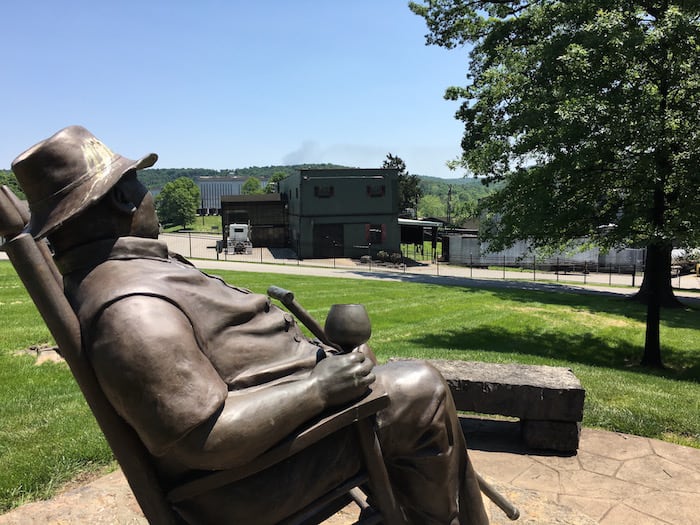
The Whiskey Wash (TWW): We wanted to start a little bit talking about the history of Booker’s. We know it’s a pretty well established Jim Beam brand. But we would love to hear from you your tale of the history of it. How did it get started? What’s been your involvement with it in recent days?
Fred Noe: Well, my father Booker, he actually created this brand back in the late ’80s. At that time, there was no cask strength products on the market. And we all would sample the bourbons straight from the barrel. And dad had heard stories growing up with his grandfather, Jim Beam, about people coming to the distillery, buying the whiskey straight from the distillers back in the old days.
And they would take these consumers up to one of the aging rackhouses, called the Quart House, and they would draw all of the bourbon right from the barrel and fill up their containers. Back then they weren’t even bottling the product. You bought it in bulk, brought your own bottle or jug, or whatever container you wanted it in. Some bars would get the entire barrel, and then they’d decant it as they used it.
We found some old ledgers, back in the late 1800s that showed people coming and buying the whiskey and sold it by the quart. And it was 50 cents a quart. My dad, remembering these stories from the family, when he was looking for a new product or innovation, he decided to sell the whiskey straight from the barrel, just like his grandfather did many years before. And one of his sayings was, “The way bourbon used to be, the way it was meant to be.”
Back in those days, you didn’t have the chill filtration, and stuff was sold at barrel strength. That was something nobody had ever seen, and he did it. Really just at first, it was kind of a novelty, Christmas gifts for family and friends and distributor partners of our company. And dad signed the bottles, and the ladies at the plant wrapped them in tissue paper, and packed them in brown wooden boxes. And they were presented as Christmas gifts. The response was overwhelming. And these distributor partners wanted to sell some of this liquid they’d never seen before. And that was how the idea of Booker’s came about.
And then in the early ’90s, about 1992, dad released the other three small batch that followed. The Knob Creek, the Baker’s, and the Basil Hayden. And that was founded by Booker’s, was the baby that got it all started. And dad did it uniquely in the fact that when the whiskey was made, it was distilled at 125 proof off the doubler, the second distillation. So, no water was added to the product before it went into the barrel. Anything distilled at higher than 125 proof has to be brought down to 125 max before it goes into the barrel. Dad didn’t want to add any water to it then. We aged it in the fifth and sixth floors of these nine-story aging rackhouses we had. Some of the old houses that were built by Jim Beam. Dad called that the center-cut of the house, because it laid close to the center of the aging rackhouse.
His thinking for that was that you get the good change of seasons, but you don’t get the extremes. Your product did not gain a lot of proof, or lose a lot of proof based on the location where it was being aged. That was how he determined the product. And then he sampled these barrels as it went along. And when the barrels hit about six years old, he started really looking at them closely. And when their age fell somewhere between six and eight years old, that’s when he would select those barrels to go into the batches. And that’s where he would pick these barrels, mingle them together for consistency, where there was a couple of hundred or whatever size batch he wanted to bottle at the time.
Then the process was strain out the charcoal, get it into a bottling tank, get the proof, and then bottle it up right straight from that tank, where no water was added to it after distillation either, because that was the way bourbon was made years and years ago, a couple of hundred years ago, 150 years ago. And that’s what dad wanted to revisit with Booker’s, was the way bourbon used to be back in the old days. And he said, “If anybody wants to add water to it, let the consumer add water to it.”
Dad wanted to give the bourbon to the consumers straight from the barrel, nothing’s added, nothing’s been taken away. That’s really the history of Booker’s. And then he went on the road and started promoting the small batch bourbon collection. Booker’s, Knob Creek, Basil Hayden, and Baker’s, and promoted them as a family. The small batch bourbon collection. And that’s where I think he and his good friends, Jimmy Russell, and Elmer T. Lee, and Parker Beam, all of them created super premium style bourbons. And where they traveled the circuit, as we kind of jokingly called it, and educated people on bourbon. I think those guys were the ones who rekindled the fire under the bourbon category and got people looking at bourbon again. I think we’re all still living off the popularity of bourbon from the work they did in the 1990s introducing the super premium category of bourbon to bourbon consumers.
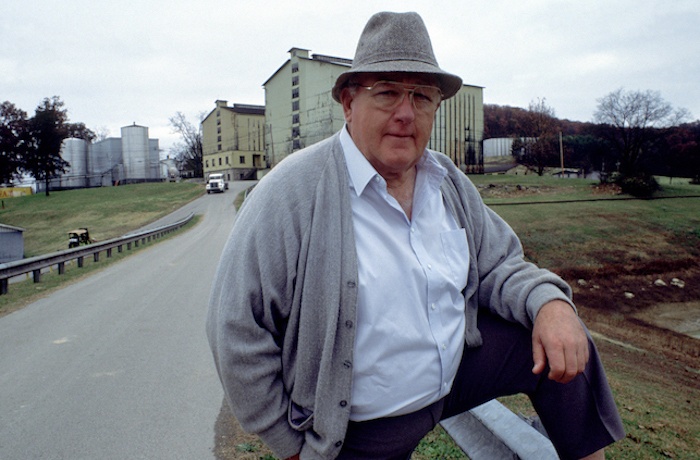
TWW: What are your early memories of Booker’s?
Noe: Well, it was unique in the fact that when dad bottled it, it was pretty much all hand done. They brought the liquid into the filler. And we had the [special] bottles – the workers had to hand put the bottles into the filling machine. We didn’t have bottling parts made for that style bottle, because it was not a bottle that we normally ran on the bottling line. If it was a Jim Beam bottle, you just go right into the all the set screws and all that.
But we had workers who physically set the bottles in the filler on the feed, and then the filler would fill them, and then we would have workers by hand put in the cork. And then they had little rubber hammers that would drive the corks in. And then the bottles went downstairs for the ladies to hand dip them in the wax for the tamper-evident seal, so you could tell they liked the way it looked, but that also let you know that nobody had opened the bottle.
The labels were put on by hand. The very first batch, dad hand wrote the labels. That’s why when you look at a Booker’s label today, it’s in somebody’s hand writing. And that was dad’s actual hand writing, because he hand wrote the first ones. But they reproduced it after the first batch. And it was a very labor intensive and very hands-on experience for all the people involved.
Very little machinery used. Just a filler to drop the 750 milliliters into the bottles. And that was it. So, it was pretty labor intensive and went very slow. And all the ladies who did the reconditioning and labeling of products, they were real careful. They made them all look nice and wrapped them up in tissue paper, as they were gifts.
Then we packaged them up and they were delivered out to, like I say, our distributor partners, and then dad would take some to family and friends as Christmas gifts in 1987, I think was the year the very first time a Booker’s bottle was ever released.
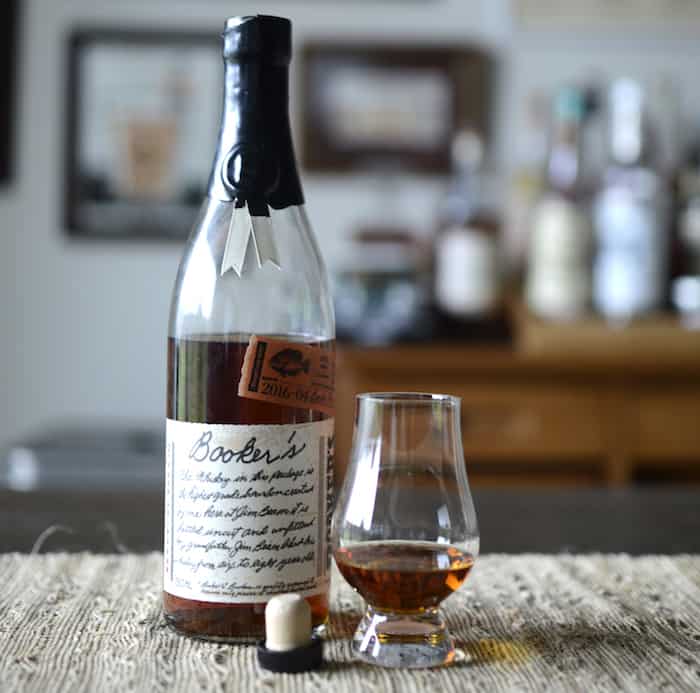
TWW: When was the first time you ever sat in on putting together one of the batches? And what was that like?
Noe: Well, dad did that work in his kitchen, here in Bardstown. When they got the barrel samples ready, our warehouse superintendent, Ronnie, would put the barrel samples in the front seat of my truck at the parking lot at Clermont, and when I went home for the evening, I lived next door to Booker’s in those days. And I would bring the bottles over to him in the kitchen, and he’d pick them right here in my mother’s kitchen where I’m sitting right now.
I was involved in the first one with him, and he would ask my opinion, but it didn’t really matter, because my vote didn’t count. That was Booker’s bourbon, it wasn’t Fred’s bourbon. It was wild to watch him do it, because we would taste a different barrel, and then he had a measuring cup where he would make his mix, which he would maybe put one ounce from this lot of barrels, and two ounces from this lot. And make up his percentages based on this Pyrex measuring cup he had.
He would stir it up, taste it and when it had the vanilla notes in the nose that he liked, the finish that he was looking for, and the big bold flavor, he would write down his percentages and I would take it back to the plant, to the warehouse superintendent, and they would go retrieve the barrels to make the batches.
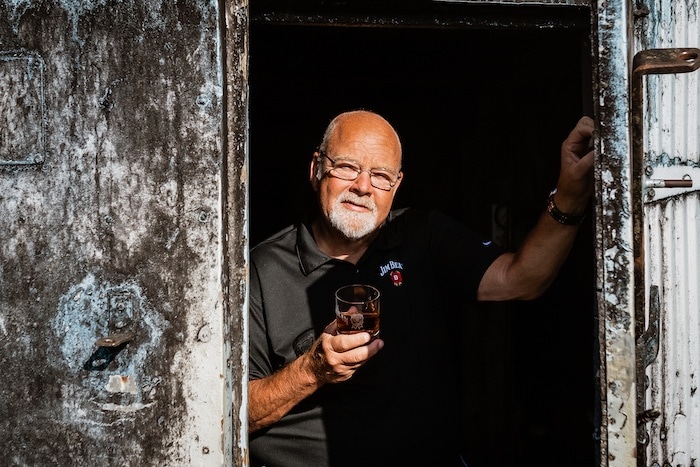
TWW: The first time you tasted Booker’s with your father, try to describe the taste if you can recall.
Noe: The thing that I always remembered when I tasted it, was you drank it neat, which he always liked to drink it neat during his sampling, and then we would add water to it. The intense flavor. And that was pretty early on in my career at the plant. Nobody was drinking barrel strength bourbon, unless you work in a warehouse and you were kind of slipping some out of the barrels as they were aging. It was pretty intense. I tasted samples with dad, and I kind of knew what it was going to be like, the big, big flavor. The barrels stored in that center-cut, just had great balance.
Barrels from the higher part of rackhouse tend to be hotter. Ones from the bottom part of the house, seem to be more mellow. But you get a more balanced flavor and nose, right in that, Booker called it the center-cut of the rackhouse. And just how adding the water, I never will forget the first time we were adding the water to it, how much it actually opened it up and changed the taste profile of the product.
And that’s what he was looking for, was if you added a little bit of water, did it open it up? And make it almost open up like a flower, and then the nose would be, you’d start seeing more vanilla notes or toasted nuts. And then the mouthfeel when you drank that straight from the barrel bourbon, the corn oils are higher, because you haven’t done the chill filtration. And it’s got a little bit of a mouthfeel and a taste of Jim Beam.
TWW: The brand had a long history to it. What do you think’s been the carrying point for it for so long?
Noe: I think the fact that we’ve kept it the same as far as the make-up. It being bottled straight from the barrel with no chill filtration – I think people who are looking for the bourbon in its purest form, realize Booker’s is exactly that.
If you’re a bourbon drinker and you add a little water, the cask strength doesn’t scare off all drinkers, but it does make people be a lot more, I guess you’d say, afraid of it a little bit. When they see a 125 proof, they think automatically it’s going to make smoke come out of your ears, and all this. But the true lovers of Booker’s realize that that’s not the case. That it is well balanced. And it can be sipped neat, but if you do add water or maybe one cube of ice or add just a little bit of water, it opens up and it can be sipped just like any other bourbon.
The sipping and savoring the flavor is kind of the big thing. You get with loyal Booker’s fans, they’re very anal about their technique and how they enjoy their Booker’s. And they think their way is the best way and don’t deviate. Don’t dare put two cubes of ice, one is plenty. It’s almost comical sometimes when I meet loyal fans of Booker’s, and they give me their ritual on how they get their new bottle, and how they open it, leave the cork out for a little while. Some people are pretty anal about letting the cork stay out for a few minutes before pouring a glass. And when they pour the glass, that it aerates.
It is, for me, it’s kind of comical to watch the rituals people have with their Booker’s that they love so dearly, and how they like it. And that’s what I tell them, “Drink it any damn way you want to, if you like it that way.” There’s one fellow I met in Alabama who drinks it with a splash of Coca-Cola. And he’s got a reason, he likes just a little bit of fizz, and just a little bit of the sweetness, not much, but just a splash, and that’s how he enjoys it. And he says, “That make you mad?” I said, “Absolutely not. If that’s the way you enjoy it, continue to drink it that way.”
That’s like the way bourbon should be. You should drink it the way you like it. There are no rules to say, well you have to have a certain style glass, or cut it to a certain strength. It’s whatever you like. And I think that’s what people who appreciate Booker’s, appreciate the fact and that’s what dad always said. And I still say today, to drink it however you like it.
TWW: One thing common to Booker’s today are the batches that come out over the course of a year. How is batching done?
Noe: With barrels that have reached that six year minimum, samples are drawn. And we start looking for the vanilla notes, just like dad did. And a good balance. And when I feel like they’ve hit there, we start mingling them together with other barrels, and we create the batches, usually about 300 barrels to a batch at this point. And we do it about four times a year. It’s still the same. I do it in my office. Or sometimes I do it here at home, but still the same, still the warehouse people go draw the samples, get the samples to me. I make the call, mix them together and get the composites. And then we bottle it up. Pretty much the same. Nothing really changed as far as how the batches are picked. The only thing different is it’s me picking. My vote counts now. Nobody else’s really does.
But I have involved my son, Freddie, he helped me with the last batch. He’s been tasting along with me since he came to work there at the plant about seven years ago. I get him to do it with me, because at some point, he will be the one carrying on his grandfather’s legacy. He’s got a good nose on him, and he’s a great bourbon taster. He’ll be fine. It’s not like – the brand is kind of funny – when I took over I started getting notes from consumers. They said they thought the Booker’s tasted better now. I said, “What, are you’re trying to hit me up for a free bottle or what?” Trying to tell me that I’m better than my father, I don’t think so. He had his style, I have mine.
That was one thing dad told me. He said, “You pick what you like. You don’t worry about it. You’re going to be the one doing it.” I picked one batch before he passed away. He was laid up, he was pretty ill and wouldn’t taste. His tasters, he said, wasn’t working real good. So he had me do one here in his kitchen, and then he tasted it and said, “Well, you’ve done pretty good, boy. You take care of that for me now.” And I think he kind of knew maybe the end was coming. And so he pretty much gave me his blessing. Let me do the entire batch, let me taste it, and he tasted all the samples. And for him to say I’d done pretty good, that was about as good a compliment that I was going to get out of him for sure. It was great.
TWW: There is a lot of American whiskey that falls under your management at the Beam distillery. Booker’s obviously is a small part of that relatively speaking. Where does Booker’s fall for you on a personal level in terms of all the brands that you help manage? What’s of importance to you, given your legacy of carrying it forward? And just basically in your heart of hearts?
Noe: To me it’s the most important one, because before dad died, he put me in charge of selecting the Booker’s, “Take care of that when I’m not here.” It’s kind of like he knew that he was about to pass away in the few coming weeks, and he was willing me Booker’s and to take care of it and protect it for him, for his legacy and for all the hard work he put into it. Every time I do a batch, it means a lot to me because it still keeps me connected to my father and it reminds me of him a whole lot, every time. Because I think back on the times when he and I would sit in mom’s kitchen, and he would mix them up and I would taste them.
Sometimes he would mix up some to see what I thought. Maybe he’d put a little more of some barrels in there, that maybe didn’t have the vanilla notes. And I might say, “I don’t like that one as well as I did the first one you did.” He’s like, “I wanted to see if you could pick up on that.” The whole time dad was letting me taste, he was, in his way, training me for what I’m doing today. Whenever I do a batch of Booker’s, still today, it’s very important to me, because it does carry me back to the times I worked with my dad when he was in the early years of creating this brand.
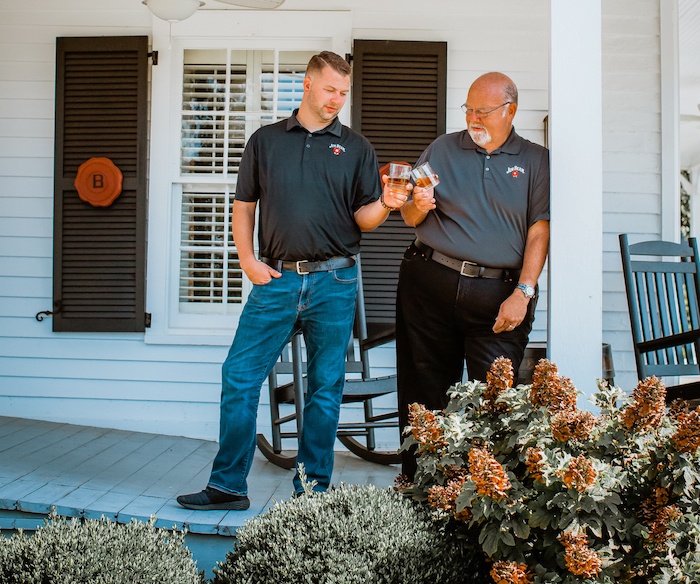
TWW: Do you have a favorite batch? And if so, which one?
Noe: The 25th Anniversary batch was about six years ago. We had some barrels that were, for the first time, over the eight year mark, and those barrels were very, very flavorful. Freddie was just starting in the business. We were in one of the aging rackhouses, and they were filming the two of us looking at these barrels. And I pulled out a sample and gave it to Freddie, asking “what do you think granddaddy would say about this one?” And he tasted it. His eyes lit up. And he said, “I think he would love this one, dad.” And it was kind of cool that kind of passing the torch, bringing my son into the business. And the flavor of those barrels we were tasting, were just in the warehouse, it was a cool time of the year. Just everything about it made it a unique experience for me, and the liquid is just very tasty too.
That’s the one that’s probably the most special to me, because like I say, bringing my son into the business to start carrying on the tradition and legacy of the family. And now he’s front and center on our production of bourbons and new products and stuff. It all goes back to family. I think Booker’s, the big thing on Booker’s, it’s the family and knowing how much it meant to my father, and carrying that tradition on and being able to pass it on to my son, who will uphold his grandfather’s legacy in the future. I think that’s a lot of it, for me anyway.
TWW: When you think about the legacy of Booker’s Bourbon, as you’ve talked a little bit about already, how does that carry into the future? Do you think there will always be stories that can be told around Booker’s life and those associated with it, as each batch these days has a theme tied to it? And those will continue to drive the batches? Or do you think you’ll run out of something at some point?
Noe: I’ve asked [the branding people during meetings about batch ideas, do you] think we’d run out, but everyone that’s in those meetings said, “Fred, you give us so many ideas with a 30 minute conversation, we shouldn’t run out of stories.” Because we’ve done things like, all of dad’s love for fishing and all the people connected to [his life]. I’d say we’re in good shape. I’ve got enough stories, and I’ve written down a bunch of ideas for the future, that we’ve got a bunch of stuff to pull from. And then my son’s going to have experiences. And his experiences with his grandfather will come into play when he starts doing it. We think we should be good for the future, as long as we want to continue to do this.
TWW: Have you thought about [creating a brand like Booker’s] that’s about yourself?
Noe: We have some stuff in the warehouse right now that Freddie and myself worked on. Kind of like what dad and me did on his Booker’s, but it’s going to be kind of my legacy. But it’s aging right now. So far the early samples have been good, and it’s aging well. So we’re continuing to make some in the same style. And we will see as it comes of age, when it gets, I think it will be close to that same age as Booker’s, somewhere between six and eight, in that neighborhood.
The reason that those numbers jump out is because that’s when you start seeing the vanilla come through from the barrel. It’s six to eight years, that’s the sweet spot. If you go much before that, you don’t see big vanilla notes. And if you go real long, then you get so woody, that the wood takes over. A lot of it is just sampling along like dad did. Finding the sweet spot, where you hit the taste profile. We’ll see if it comes out.
TWW: People have often talked about, over the years, how to drink Booker’s. We guess the question we will ask you in that regard is, how do you drink Booker’s?
Noe: I like it with a little water, and maybe a cube or two of ice. Depending on the time of the year. Now here in the summer, I may put three cubes of ice, but in the winter time I may not put any ice, if I’m looking for a little warmer drink. I drink it neat when I’m sampling. But if I’m drinking for pleasure, I’ll cut it with some water, just like dad always did.
TWW: Our last question will be, at some point you’re going to leave the distillery, we would assume. What is the legacy of Booker’s to the story of the Jim Beam distillery? And what do you hope will be continued with it?
Noe: Booker’s will always be a product, and it will be special to the folks at Jim Beam. And especially the ones who knew my father. Now it’s getting less, fewer and fewer of them around, because he died in 2004. But as long as my son is still there, Freddie knew his grandfather, he grew up with him right here next door. And he was 15 when dad passed away, so he spent some of his teenage years with him. He had some long talks. I think the legacy of Booker’s will be protected with Freddie. And we’ve set up guardrails that the company said that it will never be changed. We’ll never do anything different to Booker’s, like we’ll always distill it where there’s no water added at any point. And it will always be bottled straight from the barrel.
If it’s going to be Booker’s, it’s going to be made the same way dad made it. I’m hoping a 100 years from now, bourbon’s still around, and the world is still here, and there’ll still be bottles of Booker’s that people can look back and say, “This is the same way Booker did it in 1987.”








